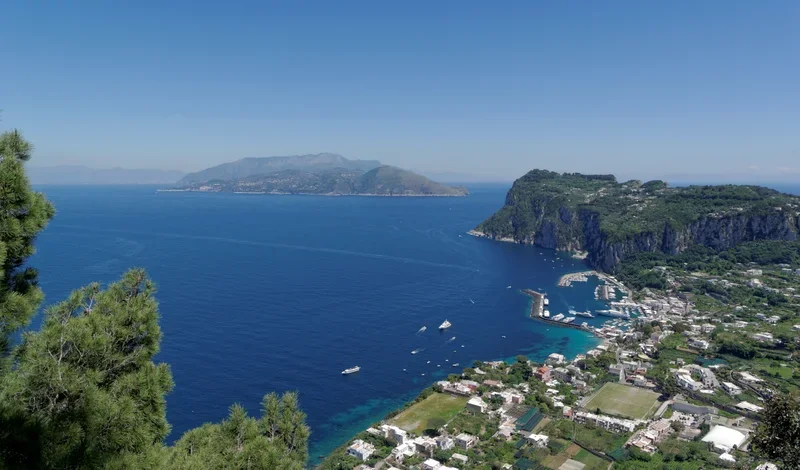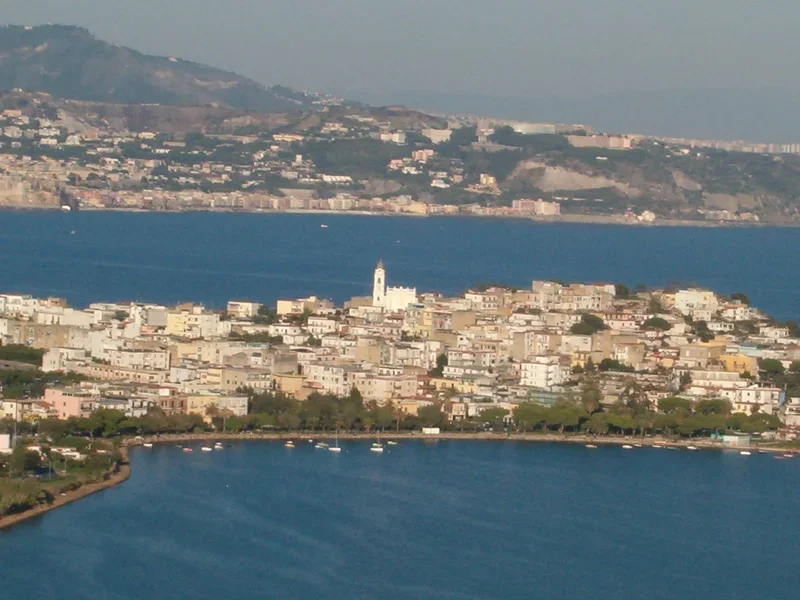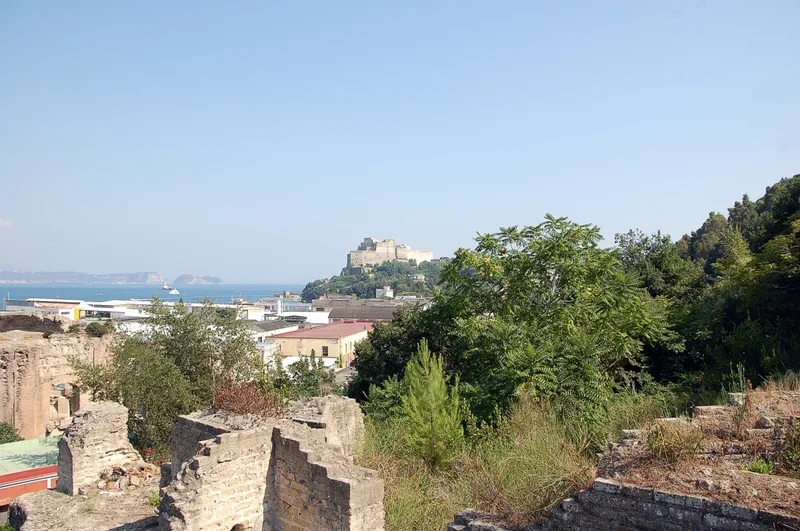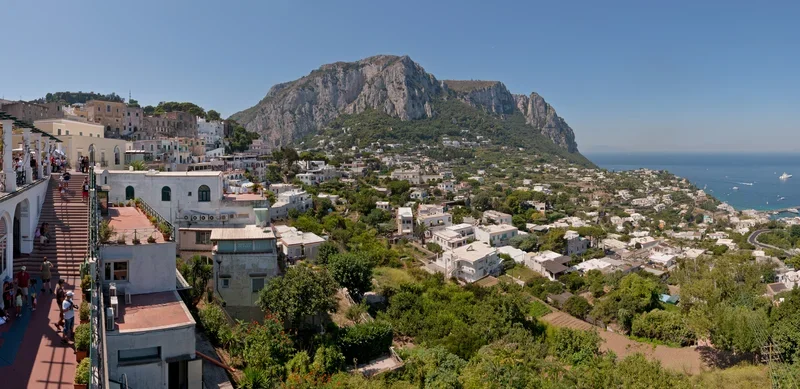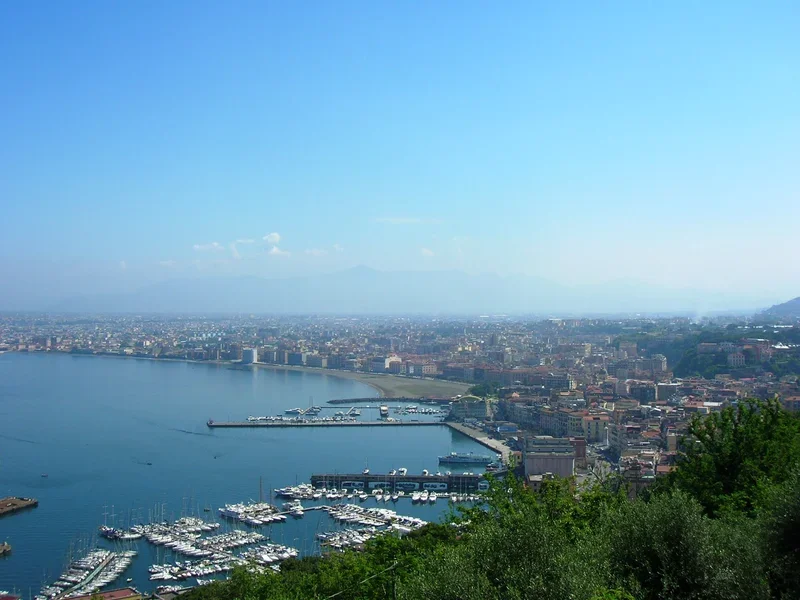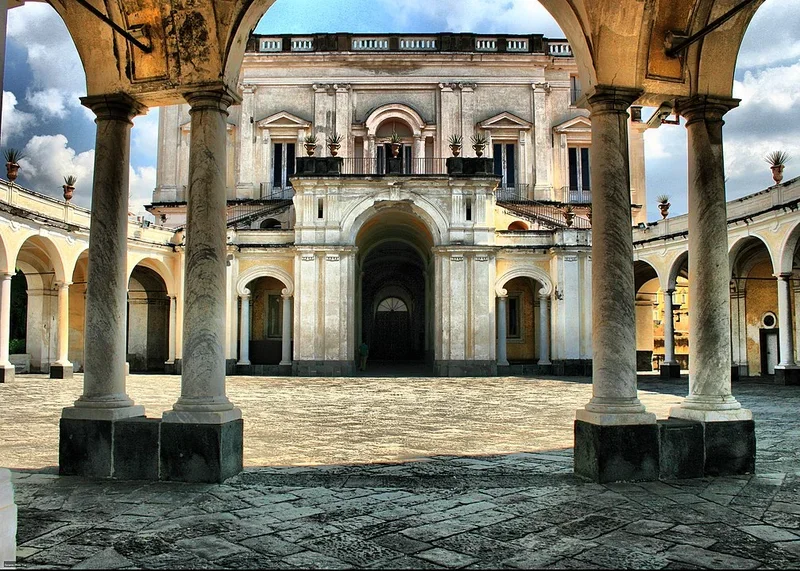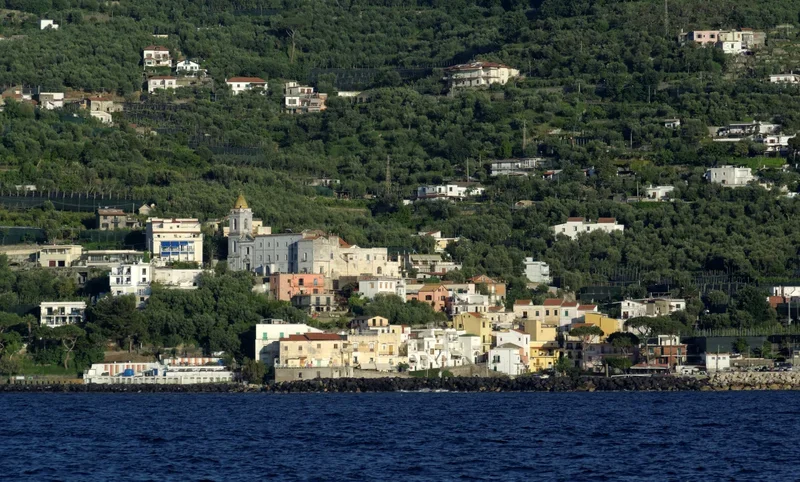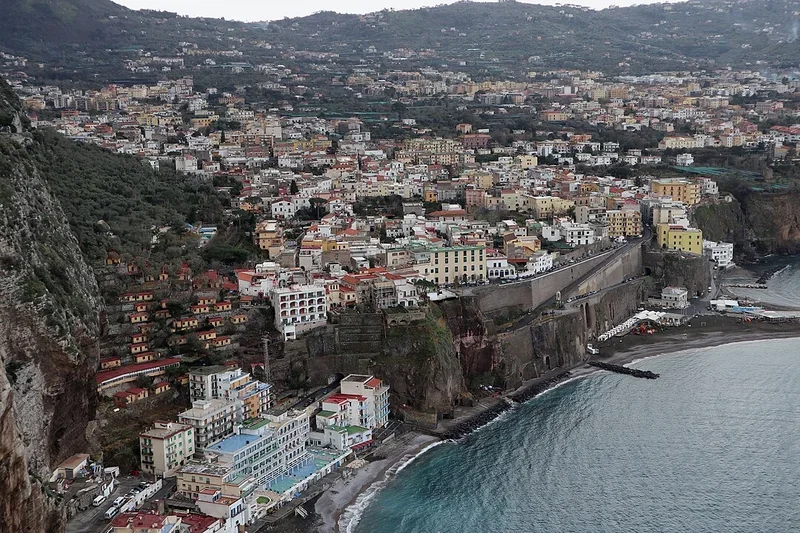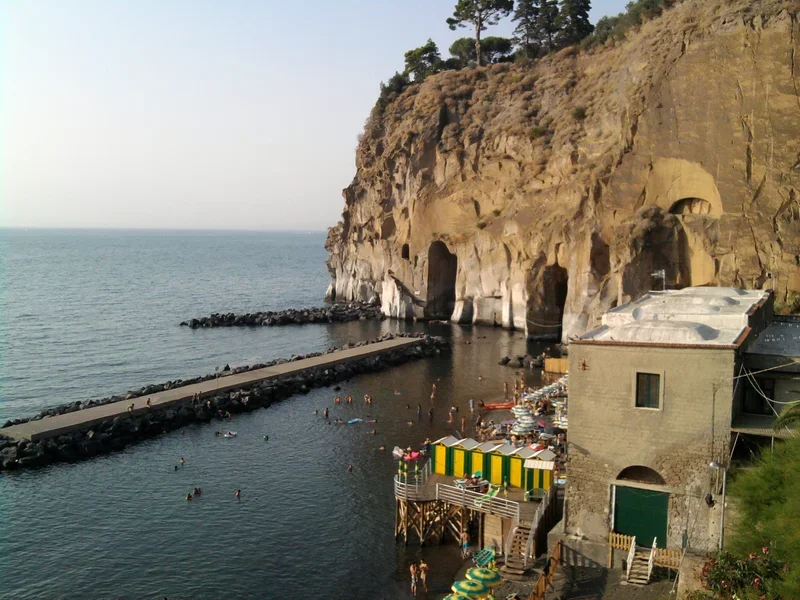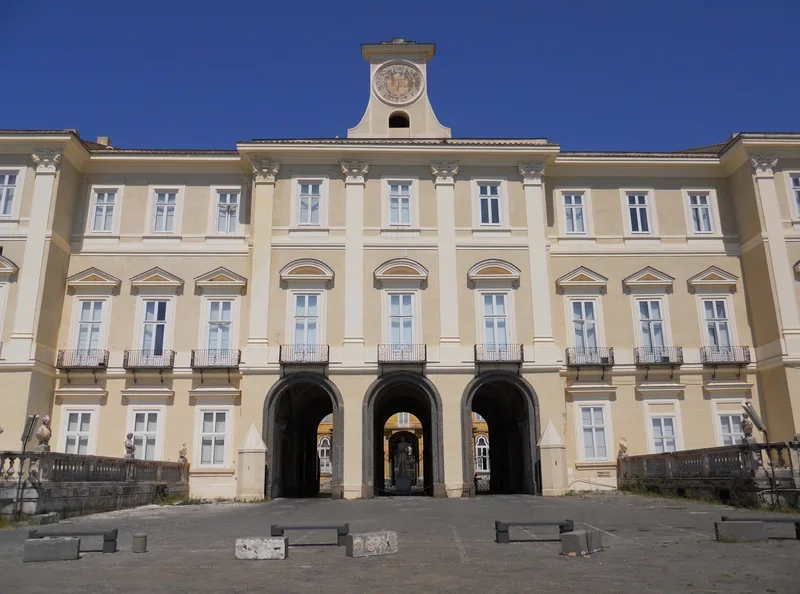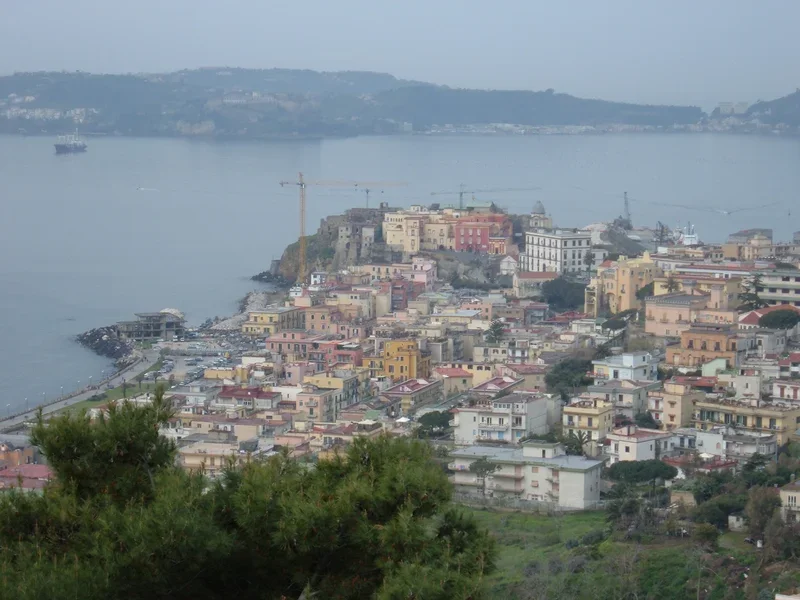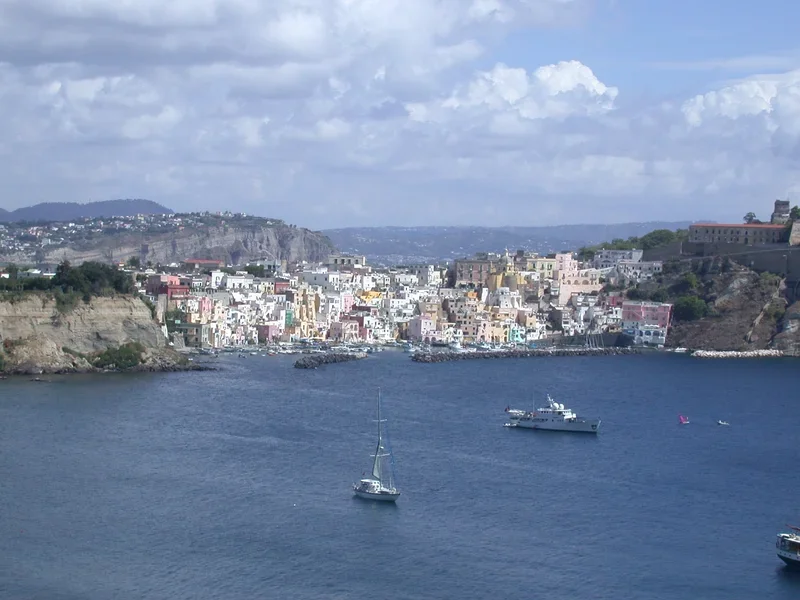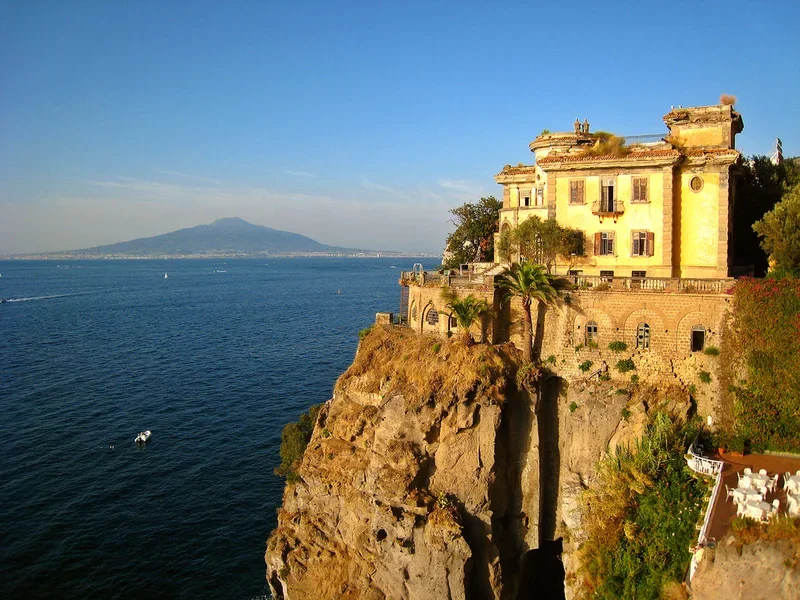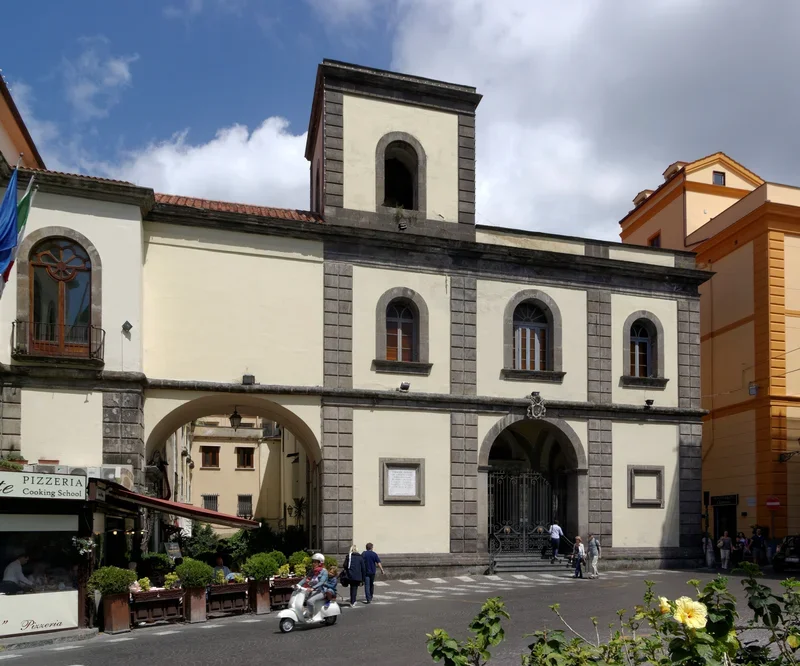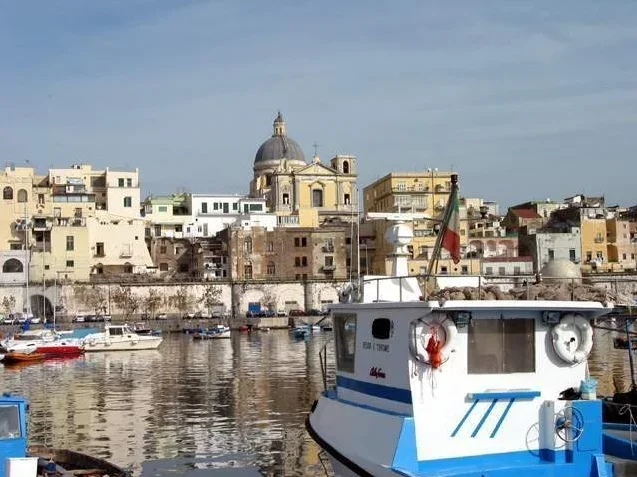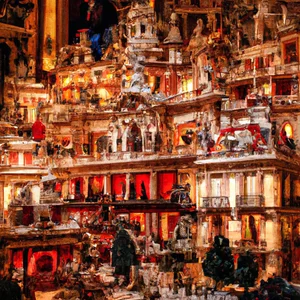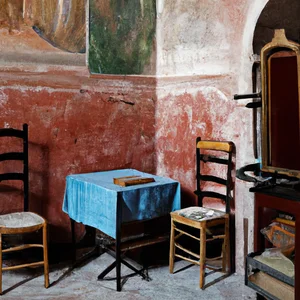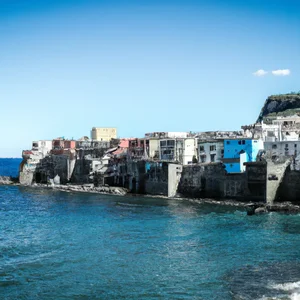Book your experience
Basilica of Santa Chiara
The Basilica of Santa Chiara, one of the most fascinating and historically rich places in Naples, represents not only a religious, but also a cultural and artistic point of reference for the city. Located in the heart of the historic center, this basilica is an extraordinary example of Gothic architecture and a place of great spirituality that attracts visitors from all over the world. Founded in the 14th century by Robert of Anjou and Queen Sancha, Santa Chiara is dedicated to Saint Clare of Assisi, founder of the Order of the Poor Clares, and preserves a priceless heritage of works of art, history and tradition.Over the centuries, the basilica has undergone several transformations and restorations, reflecting the historical vicissitudes of Naples. Its architecture, with the elegant Gothic lines and the frescoes that adorn the interiors, tells stories of a bygone era, while the majolica cloister, with its colorful ceramics, offers a corner of peace and beauty, inviting contemplation. The Basilica of Santa Chiara is not only a place of worship, but also a mausoleum for some of the most illustrious characters in Neapolitan history, whose tombs are found inside, including those of kings and queens.In this article, we will explore ten fundamental aspects of the Basilica of Santa Chiara, from its history and architecture to the works of art that enrich its interior. We will also discover the cultural and religious importance of this extraordinary monument, the events that take place there and practical information for visiting it. Whether it is a spiritual pilgrimage or a simple tourist visit, the Basilica of Santa Chiara offers a unique experience that enchants and fascinates thousands of visitors every year.
History of the Basilica of Santa Chiara
The Basilica of Santa Chiara is one of the most significant places in Naples, both from a religious and cultural point of view. Its construction began in 1310 at the behest of King Robert of Anjou and was completed in 1340. The basilica is dedicated to Saint Clare of Assisi, founder of the Order of the Poor Clares, and is part of a complex that includes a convent and a cloister.
The basilica was built in Gothic style, an architectural choice that reflects the artistic trends of the time. Over the centuries, it has undergone numerous renovations and restorations, especially after the damage suffered during the bombings of the Second World War.
The basilica has a particular importance in the history of the city of Naples, not only as a place of worship, but also as a center of social and cultural life. It has witnessed significant historical events and welcomed many personalities over the centuries.
Furthermore, the Basilica of Santa Chiara is famous for its majolica cloister, which attracts visitors from all over the world, and for the numerous works of art it houses inside.
Architecture and style of the Basilica of Santa Chiara
The Basilica of Santa Chiara, located in the heart of Naples, is a magnificent example of Gothic architecture, with Baroque influences manifesting themselves in some of its decorations. Built between 1310 and 1340, the basilica is dedicated to Saint Clare of Assisi and represents one of the main places of worship in the city.
Structure and design
The plan of the basilica is a Latin cross, with a central nave and two side naves. The central nave is characterized by a wooden trussed ceiling, while the side naves have pointed arches typical of the Gothic style. The internal walls are decorated with frescoes and sculptures that tell the story of the life of Saint Francis and Saint Clare.
Facade
The façade of the basilica, made of tuff and majolica, is simple but elegant, with a large central rose window that illuminates the interior. The main entrance is embellished with a Gothic style portal, while the sides of the basilica are adorned with pointed windows which create a luminous effect inside.
Baroque elements
In the 17th century, the basilica underwent a major renovation that added Baroque elements, including the large main altar and various side altars. These interventions have given a more sumptuous and decorated appearance, in contrast with the sobriety of the original Gothic architecture.
Historical importance
The Basilica of Santa Chiara is not only a place of worship, but also an important testimony to the architectural history of Naples. Its construction represents a period of great cultural and religious ferment, and its architectural beauty continues to attract visitors from all over the world.
The majolica cloister
The majolica cloister of the Basilica of Santa Chiara is one of the most fascinating and representative elements of the entire monumental complex. Built between 1742 and 1749, this space is characterized by a series of arches and columns that create an atmosphere of serenity and beauty.
Design and materials
The cloister stands out for its maiolica, hand-decorated ceramics that cover the walls and floors, created by Neapolitan master craftsmen. These majolica tiles feature a wide range of colours and motifs, including flowers, animals and scenes of daily life, all inspired by the local artistic tradition.
Structure and arrangement
The cloister is composed of four sides, each of which has a series of arches that open onto a central garden, embellished with plants and flowers. The piperno columns, a volcanic stone typical of the region, support the arches, creating a play of light and shadow that makes the environment particularly evocative.
Symbolism and meaning
The majolica cloister is not only a place of aesthetic beauty, but also of deep spirituality. It represents a refuge of peace and contemplation, where visitors can immerse themselves in calm and serenity, moving away from the hustle and bustle of everyday life.
Visit to the cloister
The visit to the majolica cloister is highly recommended, as it offers a unique opportunity to appreciate Neapolitan art and culture in a historical context of great importance. It is an ideal place to take photographs and enjoy the timeless beauty of Naples.
The tombs of illustrious people
The Basilica of Santa Chiara, in addition to its extraordinary architectural and artistic beauty, is also the burial place of numerous illustrious people who have marked the history of Naples and Italy. These tombs represent not only an important historical testimony, but also a symbol of the devotion and respect reserved for these prominent figures.
Buried characters
Inside the basilica you can find the tombs of various sovereigns, artists and intellectuals. Among the best known:
- Robert of Anjou: King of Naples, known for having consolidated the power of the Angevin dynasty in the 13th century.
- Charles of Anjou: Brother of Robert, founder of the Angevin dynasty and first king of Sicily.
- Alfonso of Aragon: Important figure of the 15th century, who contributed to the cultural rebirth of the city.
- Giovanni Boccaccio: Famous writer and poet, whose work profoundly influenced Italian literature.
Characteristics of the tombs
The tombs inside the Basilica of Santa Chiara are made with precious materials and present notable artistic details. Many of them are decorated with frescoes and sculptures that enhance their historical and cultural value. The mix of styles, which vary from Gothic to Renaissance, makes each burial unique and testifies to the evolution of art over the centuries.
Recognition and memorials
The tombs of Santa Chiara are not only places of eternal rest, but also spaces of memory and recognition for the deeds and works of the characters who rest there. Visitors and scholars go here not only to admire the architecture, but also to pay homage to these fundamental figures in the history of Naples and beyond.
The stained glass windows
The Basilica of Santa Chiara is famous not only for its architecture and history, but also for the artistic stained glass windows that adorn its naves and rooms. These works, created in different eras, tell biblical stories and scenes from the lives of saints, reflecting the artistic and religious tradition of Naples.
Origin and creation
The stained glass windows were mostly made in the 20th century, but some of them date back to earlier periods. Local artists and specialized craftsmen helped create these works, using traditional glass-working techniques to obtain bright and colorful effects that transform the internal atmosphere of the basilica.
Themes and symbolism
The stained glass windows represent a variety of religious themes, including the life of Jesus Christ, the Madonna and the saints. Each stained glass window is designed to tell a story, allowing worshipers and visitors to meditate on profound and spiritual meanings. The use of bright colors and the skill in composing the scenes contribute to creating an environment of devotion and beauty.
Connection with the community
The artistic stained glass windows of the Basilica of Santa Chiara not only enrich the aesthetics of the building, but also act as a bridge between the community and the religious history of Naples. Many of these works were donated by local families, companies or associations, highlighting the link between art and the daily life of Neapolitans.
Visit and appreciation
During a visit to the basilica, the artistic stained glass windows represent an element not to be missed. The light that filters through them creates a magical atmosphere, making the experience even more intense. It is advisable to take time to observe each stained glass window from different angles, to fully appreciate the artistic mastery and the spiritual message they convey.
The works of art inside the Basilica of Santa Chiara
The Basilica of Santa Chiara, located in the heart of Naples, is not only an important place of worship, but also a true art museum. The works of art that adorn the interior of the basilica reflect the cultural and religious richness of the city.
Frescoes and Decorations
Inside the basilica, you can admire frescoes created by renowned artists over the centuries. Among the best known is the fresco of the Madonna dell’Immacolata, which is located above the main altar. This work, dating back to the 16th century, is an exceptional example of Neapolitan Baroque.
Sculptures
The basilica also hosts several significant sculptures. One of the most famous is the funeral monument to Robert of Bourbon, located inside the church. Created by local artists, this monument is an example of Neapolitan neoclassicism and represents a fusion of art and devotion.
Altars and Pulpits
The altars of the basilica are decorated with works of art of great value. In addition to the main altar, there are numerous side altars, each of which features paintings and sculptures by local artists. The pulpit, in particular, is another artistic element of considerable importance, with carvings and decorations that tell biblical stories.
The Hood of Saint Francis
Another significant work is the hood of Saint Francis, a richly decorated liturgical vestment that is used in religious celebrations. This hood is an example of how sacred art is intertwined with the daily life and devotion of the faithful.
Importance of works of art
The works of art inside the Basilica of Santa Chiara are not only decorative elements, but also represent an important part of the religious and cultural history of Naples. They tell of the faith and traditions of the community, making the basilica a place of great spiritual and artistic value.
Religious and cultural importance of the Basilica of Santa Chiara
The Basilica of Santa Chiara represents one of the most significant places of worship in Naples, not only for its architectural beauty, but also for its profound religious and cultural significance. Founded in 1310 by the Franciscans, the basilica is dedicated to Saint Clare of Assisi, founder of the Order of Poor Clares, and has always played a crucial role in the spiritual life of the city .
Religious importance
The basilica is a center of devotion and spirituality, where numerous faithful go on pilgrimage to pray and participate in religious celebrations. Its location in the heart of Naples makes it a point of reference for the local Christian community and a meeting place for important religious events.
Cultural significance
In addition to its religious function, the Basilica of Santa Chiara is also a symbol of Neapolitan culture. Its history is intertwined with that of the city, representing a place of cultural and social aggregation. It has hosted historic events, celebrations and significant moments for the community, helping to shape the cultural identity of Naples.
Furthermore, the basilica is an important artistic heritage, with works that reflect the history and culture of the period in which it was built and transformed. Its conservation and valorization represent a commitment for future generations, so that we can continue to enjoy its beauty and its meaning.
Events and Celebrations at the Basilica of Santa Chiara
The Basilica of Santa Chiara, in addition to being an important place of worship, is also a vital center for religious and cultural events and celebrations. During the year, the basilica hosts numerous events, both liturgical and artistic.
Liturgical Feasts
Among the most significant religious celebrations are the solemn masses which are held on special occasions, such as Christmas, Easter and the feast of Santa Chiara, which is celebrated on August 12th. During these festivities, the basilica fills with faithful and visitors, creating an atmosphere of intense spirituality.
Concerts and Cultural Events
The Basilica of Santa Chiara is also a stage for cultural events, such as classical music concerts and poetry recitals. These events attract a varied audience and contribute to enhancing the artistic and cultural heritage of the city. In particular, the majolica cloister often hosts outdoor concerts during the summer, taking advantage of the beauty of the place and the favorable acoustics.
Special Guided Tours
On some occasions, the basilica offers special guided tours in conjunction with historical or artistic events. These tours are designed to deepen knowledge of the basilica and its works, making the experience even richer and more informative for visitors.
The Basilica of Santa Chiara, therefore, is not only a place of prayer, but also an important point of reference for the local community and tourists, helping to keep alive the religious and cultural traditions of Naples.
Visits and opening hours
The Basilica of Santa Chiara is one of the most visited places in Naples, attracting tourists and faithful from all over the world. The basilica is open to the public for visits, allowing everyone to admire its beauty and historical heritage.
Opening hours
Opening hours may vary depending on the season and holidays, but generally the basilica is open at the following times:
- Monday to Saturday: 9:00 - 19:00
- Sunday: 9:00 - 13:00 and 16:00 - 19:00
Guided tours
It is possible to take part in guided tours that offer historical and artistic insights into the basilica. Guided tours are available in several languages and can be booked in advance through the official website or at the tourist information office.
Tickets and access
Access to the basilica is free, but to visit the Majolica Cloister and other specific areas an entrance ticket may be required. Prices may vary, so it is advisable to check the official website for the most up-to-date information.
Tips for visiting
It is advisable to visit the basilica during the week to avoid the crowds on weekends. Furthermore, it is suggested to respect the appropriate dress protocol, as this is a place of worship. Don’t forget to bring a camera to capture the beauty of the interiors and surrounding gardens!
How to get to the Basilica of Santa Chiara
The Basilica of Santa Chiara is located in the heart of Naples, in Piazza Santa Chiara. It is easily accessible by various public and private means of transport.
By car
If you arrive by car, you can use the nearby car parks. However, it is advisable to pay attention to the limited traffic zones (ZTL) in the historic center of Naples. Be sure to check road signs and comply with local regulations to avoid fines.
By public transport
Naples is well connected by public transport, so you can easily reach the Basilica of Santa Chiara using:
- Metro: The closest stop is Università (Line 1), from which you can walk for about 10 minutes.
- Bus: Several bus lines stop near Piazza Santa Chiara. The most common lines include 151 and C63.
- Funiculars: The Montesanto Funicular will take you close to the center, from where you can walk to the basilica.
On foot
If you are in the historic center of Naples, the Basilica of Santa Chiara is easily reachable on foot. It is located in an area rich in history and culture, so take the opportunity to explore the surrounding streets and admire the Neapolitan architecture.
By taxi or ridesharing
Another option is to take a taxi or use ridesharing services like Uber. This can be a convenient solution, especially if you have luggage or if you are traveling in a group.
In conclusion, whether you choose to arrive by car, public transport or on foot, the Basilica of Santa Chiara is easily accessible and definitely worth a visit during your stay in Naples.

